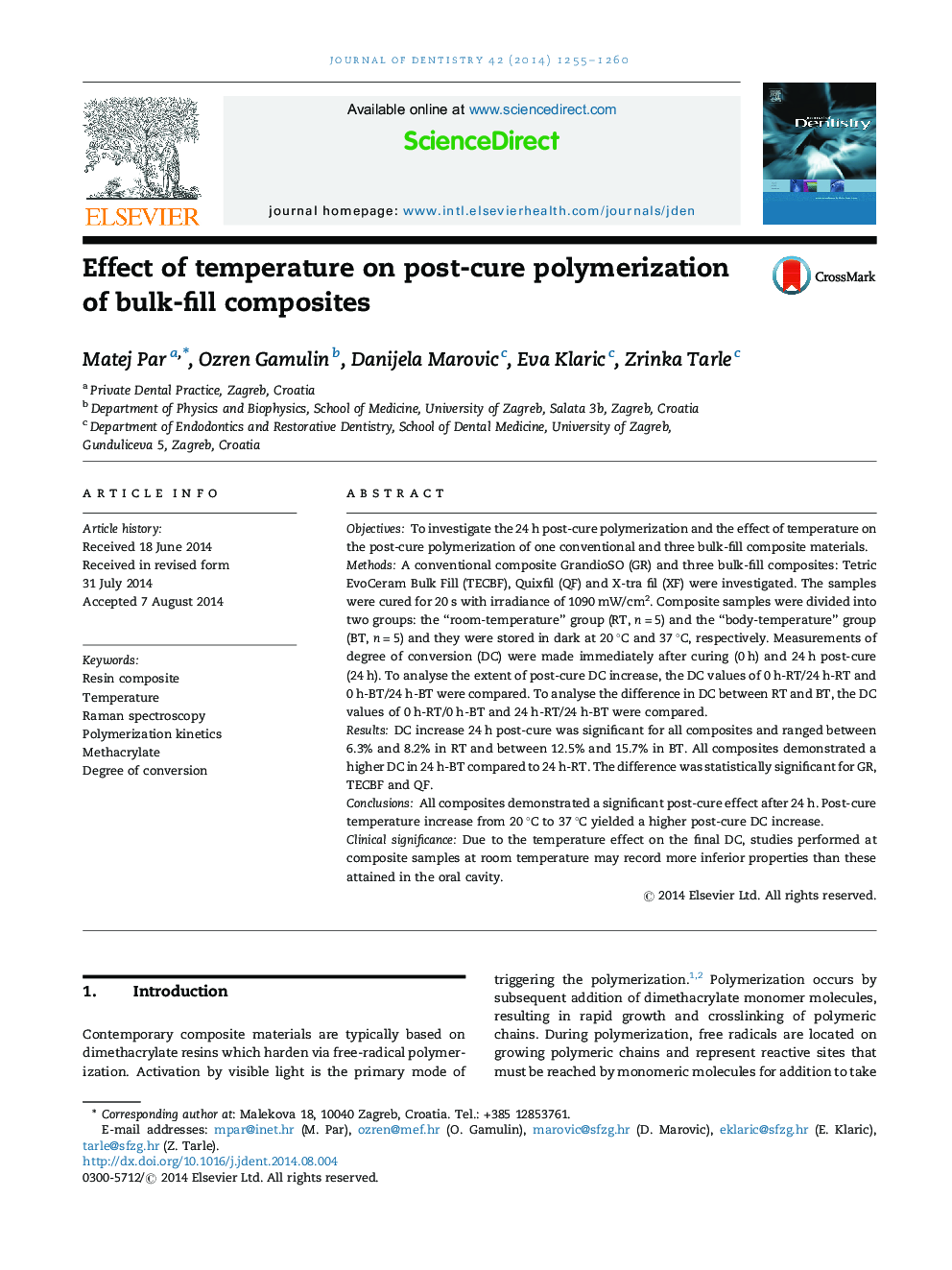| Article ID | Journal | Published Year | Pages | File Type |
|---|---|---|---|---|
| 6053042 | Journal of Dentistry | 2014 | 6 Pages |
ObjectivesTo investigate the 24 h post-cure polymerization and the effect of temperature on the post-cure polymerization of one conventional and three bulk-fill composite materials.MethodsA conventional composite GrandioSO (GR) and three bulk-fill composites: Tetric EvoCeram Bulk Fill (TECBF), Quixfil (QF) and X-tra fil (XF) were investigated. The samples were cured for 20 s with irradiance of 1090 mW/cm2. Composite samples were divided into two groups: the “room-temperature” group (RT, n = 5) and the “body-temperature” group (BT, n = 5) and they were stored in dark at 20 °C and 37 °C, respectively. Measurements of degree of conversion (DC) were made immediately after curing (0 h) and 24 h post-cure (24 h). To analyse the extent of post-cure DC increase, the DC values of 0 h-RT/24 h-RT and 0 h-BT/24 h-BT were compared. To analyse the difference in DC between RT and BT, the DC values of 0 h-RT/0 h-BT and 24 h-RT/24 h-BT were compared.ResultsDC increase 24 h post-cure was significant for all composites and ranged between 6.3% and 8.2% in RT and between 12.5% and 15.7% in BT. All composites demonstrated a higher DC in 24 h-BT compared to 24 h-RT. The difference was statistically significant for GR, TECBF and QF.ConclusionsAll composites demonstrated a significant post-cure effect after 24 h. Post-cure temperature increase from 20 °C to 37 °C yielded a higher post-cure DC increase.Clinical significanceDue to the temperature effect on the final DC, studies performed at composite samples at room temperature may record more inferior properties than these attained in the oral cavity.
